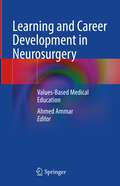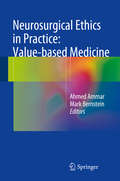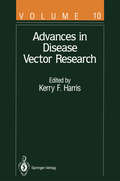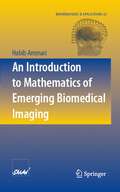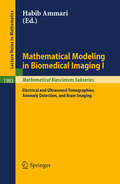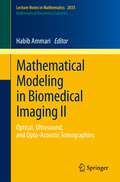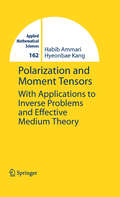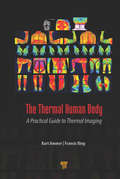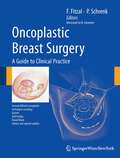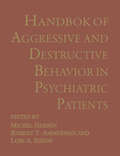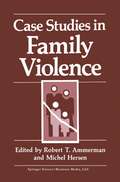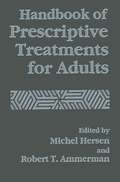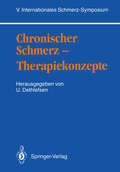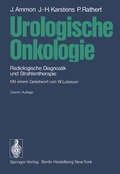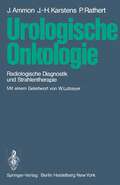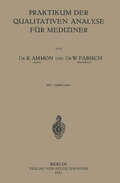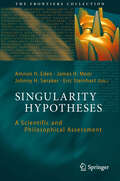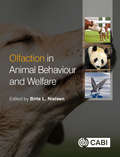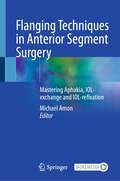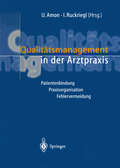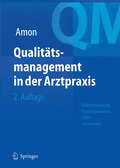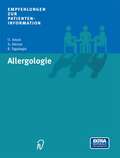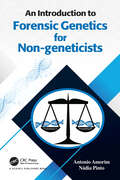- Table View
- List View
Learning and Career Development in Neurosurgery: Values-Based Medical Education
by Ahmed AmmarThe neurosurgical, surgical and medical training and practice models have to keep up with the technological revolution in the 21st Century as our lives changed on a swift base. Making bioethics and metacognition a cornerstone in medical education and practice will flourish our humane societies. Metacognition is thinking about one’s thinking, to plan, monitor and assess one’s understanding and performance. By adherence to medical ethics and Values-Based Medicine (VsBM) as guiding principles, we can develop benevolent medical practice. To enhance knowledge application, skills, and character qualities in realms beyond the immediate context in which they were learned. In this book, we developed a framework on how to evolve medical education and training by utilizing hi-tech. We divided the book into five principal components; Current and traditional root analysis of the learning process, Ethics and metacognition of education, learning and career development, Obstacles, difficulties and setbacks in learning and career development process, Learning in the digital era, and Mentorship. The author believes we are entering a new era of information technology, which will have a significant impact on the education, sciences, strategies and philosophy. Therefore, in preparation for this colossal transformation, the author brings together the best brains in the neurosurgical field from around the globe. Twenty distinguished Professors of Neurosurgery and educators from Canada, the USA, Colombia, the UK, Italy, the Netherland, India, Japan, China, Rwanda, Egypt and Saudi Arabia gathered their experiences and thoughts in this book to shade light on an evolving world that will be the norm in near future.
Neurosurgical Ethics in Practice: Value-based Medicine
by Ahmed Ammar Mark BernsteinGood neurosurgical practice is based not only on evidence, skills, and modern equipment, but also on good values. This book is the first to discuss specifically the ethical issues that arise during the daily practice of neurosurgery. It is divided into three parts addressing patients’ rights, ethical issues relating to the working environment, and wider societal aspects such as dealings of neurosurgeons with the legal system, the media, and companies. The authors are well-established neurosurgeons who present the ethical problems that they have encountered during their careers and explain what they have learned in confronting these problems. In all, more than 50 neurosurgical cases drawn from real life are reported and discussed from an ethical point of view. This book will be especially informative for young neurosurgeons and will provide all who work in this very special field with a road map on how to avoid violations of medical ethics in neurosurgical practice.
Advances in Disease Vector Research (Advances in Disease Vector Research #10)
by El Desouky Ammar Y. Antignus T. R. Burkot E. P. Camargo Y. Chinzei S. Cohen D. Gonsalves P. M. Graves H. H. Hagedorn R. Hull E. I. Korenberg Yu. V. Kovalevskii G.W. Otim-Nape M. K. Shaw A. J. Shelley W. J. Tabachnick DeMar Taylor J. M. Thresh F. G. Wallace S. D. Yeh A. S. YoungVolume 10 of Advances in Disease Vector Research consists of seven chapters on vectors that affect human or animal health and six chapters on plant pathogens and their vectors. In Chapter 1, Yasuo Chinzei and DeMar Taylor discuss hormonal regulation of vitellogenesis in ticks. Many blood sucking insects and ticks transmit pathogens by engorgement, which induces vitellogenesis and oviposition in adult animals. To investigate the pathogen transmission mechanism in vector animals, information on the host physiological and endocrinological conditions after engorgement is useful and important because pathogen development or proliferation occurs in the vector hosts at the same time as the host reproduction. Chinzei and Taylor have shown that in ticks, juvenile hormone (JH) is not involved in the endocrinological processes inducing vitellogenin biosynthesis. Synganglion (tick brain) factor(s) (vitellogenesis inducing factor, VIF) is more important to initiate vitellogenesis after engorgement, and ecdysteroids are also related to induction of vitellogenin synthesis. In their chapter, based mainly on their own experimental data, the authors discuss the characterization of main yolk protein, vitellogenin (Vg) , biosynthesis and processing in the fat body, and hormonal regulation of Vg synthesis in tick systems, including ixodid and argasid ticks.
An Introduction to Mathematics of Emerging Biomedical Imaging (Mathématiques et Applications #62)
by Habib AmmariBiomedical imaging is a fascinating research area to applied mathematicians. Challenging imaging problems arise and they often trigger the investigation of fundamental problems in various branches of mathematics. This is the first book to highlight the most recent mathematical developments in emerging biomedical imaging techniques. The main focus is on emerging multi-physics and multi-scales imaging approaches. For such promising techniques, it provides the basic mathematical concepts and tools for image reconstruction. Further improvements in these exciting imaging techniques require continued research in the mathematical sciences, a field that has contributed greatly to biomedical imaging and will continue to do so. The volume is suitable for a graduate-level course in applied mathematics and helps prepare the reader for a deeper understanding of research areas in biomedical imaging.
Mathematical Modeling in Biomedical Imaging I: Electrical and Ultrasound Tomographies, Anomaly Detection, and Brain Imaging (Lecture Notes in Mathematics #1983)
by Habib AmmariMathematical Modeling in Biomedical Imaging II: Optical, Ultrasound, and Opto-Acoustic Tomographies (Lecture Notes in Mathematics #2035)
by Habib AmmariThis volume reports on recent mathematical and computational advances in optical, ultrasound, and opto-acoustic tomographies. It outlines the state-of-the-art and future directions in these fields and provides readers with the most recently developed mathematical and computational tools. It is particularly suitable for researchers and graduate students in applied mathematics and biomedical engineering.
Polarization and Moment Tensors: With Applications to Inverse Problems and Effective Medium Theory (Applied Mathematical Sciences #162)
by Habib Ammari Hyeonbae KangThis book presents important recent developments in mathematical and computational methods used in impedance imaging and the theory of composite materials. By augmenting the theory with interesting practical examples and numerical illustrations, the exposition brings simplicity to the advanced material. An introductory chapter covers the necessary basics. An extensive bibliography and open problems at the end of each chapter enhance the text.
The Thermal Human Body: A Practical Guide to Thermal Imaging
by Kurt Ammer Francis RingThis book is a guide for the constantly growing community of the users of medical thermal imaging. It describes where and how an infrared equipment can be used in a strictly standardised way and how one can ultimately comprehensively report the findings. Due to their insight into the complex mechanisms behind the distribution of surface temperature, future users of medical thermal imaging should be able to provide careful, and cautious, interpretations of infrared thermograms, thus avoiding the pitfalls of the past. The authors are well-known pioneers of the technique of infrared imaging in medicine who have combined strict standard-based evaluation of medical thermal images with their expertise in clinical medicine and related fields of health management.
The Thermal Human Body: A Practical Guide to Thermal Imaging
by Kurt Ammer Francis RingThis book is a guide for the constantly growing community of the users of medical thermal imaging. It describes where and how an infrared equipment can be used in a strictly standardised way and how one can ultimately comprehensively report the findings. Due to their insight into the complex mechanisms behind the distribution of surface temperature, future users of medical thermal imaging should be able to provide careful, and cautious, interpretations of infrared thermograms, thus avoiding the pitfalls of the past. The authors are well-known pioneers of the technique of infrared imaging in medicine who have combined strict standard-based evaluation of medical thermal images with their expertise in clinical medicine and related fields of health management.
Oncoplastic Breast Surgery: A Guide to Clinical Practice
by Bernard AmmererThe initial idea to write a book on oncoplastic techniques was raised through a meeting on breast cancer treatment in Saalfelden, A- tria two years ago. Contrary to the rather minor role breast surgery is conceded today compared to other treatment modalities the s- geons role on the further outcome of the disease is crucial and never compensated by radiation or adjuvant therapy. Whereas surgery a decade ago was merely excision of the cancer and closure of the wound leaving behind a mutilated breast in many women, the advent of oncoplastic surgery completely changed the modern surgical approach to breast cancer. The concept of oncoplastic breast surgery combines oncologic - mor resection - either breast conservation or mastectomy - with t- ditional or less traditional plastic surgical techniques. The primary goal is to achieve an optimal cosmetic result with long time local tumor control. Some (non – randomized) studies available in patients following breast conservation oncoplastic surgery showed tumor resection to be associated with wider free margins, less patients needing re-operation surgery for involved or close margins, a widening of the indications for breast conser- tion surgery, a low complication rate and at least an equal local recurrence rate. There is no doubt that oncoplastic breast surgery experienced a r- id rise with more patients demanding this kind of surgery. However, a profound knowledge of the different oncoplastic techniques is - sential for the outcome.
Handbook of Aggressive and Destructive Behavior in Psychiatric Patients
by Robert Ammerman Michel Hersen L. A. SissonScarcely a day passes without the media detailing some form of human aggression, whether it be on its grandest scale in the form of war, random bombings and shootings in the streets, torture in a prison camp, murder by gangs, wife abuse resulting in the murder of the husband, or the physical abuse of children, sometimes resulting in their death. Frequently perpetrators of human aggression, when arrested and tried in court, resort to a psychiatric defense. But are all such aggressors indeed appropriately psychiatric patients? And if so, what are their particular diagnoses and how do these relate to aggression? Also of concern is aggression directed against self, as evidenced in the rising incidence of suicide among young people or the self-mutilation of patients suffering from certain personality disorders. Both violence directed outward and aggression toward oneself pose considerable challenges to clinical management, whether in the therapist's office or in the inpatient unit. Although we have not been able to find successful deterrents to aggression, a sizeable body of evidence does exist, certainly of a descriptive nature. Such data for psychiatric patients are scattered, however, and can be found in literatures as diverse as the biological, ethological, epidemiological, legal, philosophical, psychological, psychiatric, and crimi nological. Therefore, given the increased frequency with which mental health professionals encounter cases of violence in their day-to-day work, we believed it important that existing data be adduced in one comprehensive volume.
Case Studies in Family Violence
by Robert T. AmmermanThe past 20 years have seen the emergence of family violence as one of the most critical problems facing society. The alarming incidence figures of abuse and neglect directed toward family members justify this atten tion. For example, over 1 million children are thought to be abused and neglected each year. Similarly, almost 2 million women are victims of wife battering each year. Annual rates of elderly mistreatment are thought to be as high as 32 per 1000 population. Accurate epidemiologi cal data only now are being compiled on more recently recognized forms of mistreatment, such as psychological abuse, ritualistic abuse of chil dren, and child witnessing of adult violence. The pervasiveness of do mestic mistreatment makes it a priority for clinicians and researchers alike. For clinicians, intrafamilial violence represents a formidable chal lenge with respect to assessment and treatment. The etiology of abuse and neglect is multidetermined. There are numerous pathways in the development of family violence, and these interact and converge in a nonlinear fashion. The consequences of family violence are equally com plex and divergent. Victims of mistreatment can display a variety of physical injuries and psychological disturbances. No single psychiatric syndrome or symptom constellation has been consistently implicated in any form of family mistreatment. The perpetrators of family violence are equally heterogeneous in their clinical presentations. Illustrative dys functions in perpetrators include skill deficits, substance abuse, mental illness, and impulse-control disorders.
Handbook of Prescriptive Treatments for Adults
by Robert T. Ammerman Michel HersenThis book could not have been conceptualized or published 20 years ago. Indeed, it is doubtful that we could have organized the material for this handbook 10 years ago. Over the last 20 years, however, the painstaking efforts of many clinical researchers working with a variety of resistive psychopathologies have resulted in specific psychotherapies and pharmacotherapies that are effective with a significant propor tion of patients, at least for some of the disorders. Much clinical research remains to be carried out in the forthcoming decades. But now that we are nearing the 21st century, at least some statement about efficacy can be made. In 1967, Gordon Paul succinctly stated that the ultimate goal of treatment outcome research is to determine "What treatment, by whom, is most effective for this individual with that specific problem, and under which set of circumstances" (p. 111). At that time, empirical evaluations of psychosocial and pharmacologic treatments were few and far between. Methodological strategies for determining treatment effectiveness were also in the formative stage, as exemplified by introduc tion of control groups that received inactive interventions (i. e. , placebo) and the relatively recent practice of comparing two or more treatments in addition to placebo. In the almost three decades since Paul's oft-quoted dictum, both the quantity and the quality of treatment outcome research with adults have increased dramati cally.
Chronischer Schmerz — Therapiekonzepte: V. Internationales Schmerz-Symposium
by J. Ammon E. Aulbert U. Dethlefsen U. Gatzemeier U. Hankemeier J. Hildebrandt L. Hoffmann I. Jurna B. Koßmann C. Maier H. Von Matthiessen E. Ottawa J. Sorge M. Strumpf U. Thoden C. Wilder-Smith M. ZenzSchmerz gehört zu den häufigsten Ursachen, die den Patienten zum Arzt führen. Eine adäquate Schmerztherapie sollte nicht nur den wenigen Schmerzzentren vorbehalten bleiben. Es ist zu fordern, daß die neuen Erkenntnisse und Therapiekonzepte, speziell für die Behandlung chronischer Schmerzen, auch in der täglichen Praxis aller Fachgebiete umgesetzt werden. Die Symposiumsbeiträge geben eine aus dem theoretischen Wissen und der klinischen Erfahrung erwachsene Synopsis aktueller Aspekte einer adäquaten Schmerztherapie. Das Buch wendet sich an alle Fachgebiete der Medizin, die mit den Fragen der Behandlung chronischer Schmerzen konfrontiert werden.
Urologische Onkologie: Radiologische Diagnostik und Strahlentherapie
by Jürgen Ammon Johann-Hinrich Karstens Peter RathertUrologische Onkologie: Radiologische Diagnostik und Strahlentherapie
by Jürgen Ammon Johann-Hinrich Karstens Peter RathertPraktikum der Qualitativen Analyse für Mediziner
by R. Ammon W. FabischDieser Buchtitel ist Teil des Digitalisierungsprojekts Springer Book Archives mit Publikationen, die seit den Anfängen des Verlags von 1842 erschienen sind. Der Verlag stellt mit diesem Archiv Quellen für die historische wie auch die disziplingeschichtliche Forschung zur Verfügung, die jeweils im historischen Kontext betrachtet werden müssen. Dieser Titel erschien in der Zeit vor 1945 und wird daher in seiner zeittypischen politisch-ideologischen Ausrichtung vom Verlag nicht beworben.
Singularity Hypotheses: A Scientific and Philosophical Assessment (The Frontiers Collection)
by Amnon H. Eden, James H. Moor, Johnny H. Søraker and Eric SteinhartSingularity Hypotheses: A Scientific and Philosophical Assessment offers authoritative, jargon-free essays and critical commentaries on accelerating technological progress and the notion of technological singularity. It focuses on conjectures about the intelligence explosion, transhumanism, and whole brain emulation. Recent years have seen a plethora of forecasts about the profound, disruptive impact that is likely to result from further progress in these areas. Many commentators however doubt the scientific rigor of these forecasts, rejecting them as speculative and unfounded. We therefore invited prominent computer scientists, physicists, philosophers, biologists, economists and other thinkers to assess the singularity hypotheses. Their contributions go beyond speculation, providing deep insights into the main issues and a balanced picture of the debate.
Olfaction in Animal Behaviour and Welfare
by Dr Luisa Amo Dr Raimund Apfelbach Dr J. Elizabeth Bolhuis Dr Vincent Bombail Dr Roisin Campbell-Palmer Dr Caroline Clouard Dr Laurent Dormont Dr Markus Fendt Dr Peter Hepper Dr Tadeusz Jezierski Dr Olivia Le Moëne Dr Frédéric Levy Dr Nicolas Meunier Dr Raymond Nowak Dr Marije Oostindjer Dr Olivier Rampin Dr Frank Rosell Dr Roland Salesse Dr Burton Slotnick Dr Deborah Wells Dr Tristram D. Wyatt Birte L. NielsenEvidence-based, yet entirely practical, this important new text builds upon the basics of neuroscience to describe the links between olfaction and animal behaviour, and the effects of odours in animal welfare. Animals use smells in a multitude of ways: to orientate themselves, to create social bonds, to recognise food, to initiate reproduction, and to avoid predators and imminent threats such as fire. Starting from the scientific basis of olfaction and odour perception, the book covers pheromones and behavioural tests, before describing the role of olfaction in feeding behaviour, reproduction, disease detection, and animal housing. The book: · is written in an evidence-based way, yet with an easy-to-understand style, making it accessible to non-experts · focuses on animals managed by humans, i.e. farm, zoo, lab and companion species · is illustrated by in-depth research examples of many different species This is a captivating introduction to the world of smells, suitable for advanced students, researchers, and teachers of applied ethology, animal welfare and veterinary science.
Flanging Techniques in Anterior Segment Surgery: Mastering Aphakia, IOL-exchange and IOL-refixation
by Michael AmonThis book highlights the great achievements made in order to overcome challenging situations with different flanging techniques. Liliana Werner will discuss the different causes of IOL luxation. Shin Yamane, Sergio Canabrava, Gabor Scharioth and Ehud Assia will describe their disruptive techniques for scleral IOL fixation.Even though it is impossible to describe and discuss the plethora of surgical techniques, implants and instruments completely, we also tried to create a systematic approach for decision making and give an overview on instrumentation.As flanging techniques represent a very demanding surgery, the aim of this book is to steepen the learning curve and to encourage surgeons to add the presented techniques to their surgical armamentarium.
Qualitätsmanagement in der Arztpraxis: Patientenbindung, Praxisorganisation, Fehlervermeidung
by U. AmonNiedergelassene Ärzte und ihre Mitarbeiter finden in diesem strukturierten Nachschlagewerk klare Praxis-Anleitungen für effizientes Qualitätsmanagement.- Praxisbeispiele- Checklisten und Formulare- Arbeitsanleitungen- Strategien zur FehlervermeidungDer Autor hat sich als erfahrener Berater von Kliniken und Arztpraxen sowie als Referent für Qualitätsmanagement einen Namen gemacht.
Qualitätsmanagement in der Arztpraxis: Patientenbindung, Praxisorganisation, Fehlervermeidung
by U. AmonNiedergelassene Ärzte und ihre Mitarbeiter finden in diesem strukturierten Nachschlagewerk klare Praxis-Anleitungen für effizientes Qualitätsmanagement.- Praxisbeispiele- Checklisten und Formulare- Arbeitsanleitungen- Strategien zur FehlervermeidungDer Autor hat sich als erfahrener Berater von Kliniken und Arztpraxen sowie als Referent für Qualitätsmanagement einen Namen gemacht.
Allergologie (Empfehlungen zur Patienteninformation)
by U. Amon A. Menne R. YagubogluPatienten und ihre behandelnden Ärzte werden zunehmend zu Partnern im diagnostischen und therapeutischen Prozess. Bei vielen allergischen Erkrankungen hängt der Therapieerfolg direkt von der Mitarbeit des informierten Patienten ab. Vorliegendes Buch + CD-ROM stellt effiziente Hilfsmittel für die Allergie-Patienteninformation bereit. Während der umfangreiche lexikalische Teil (mit vielen auf der CD anklickbaren Verweisen) die Praxishelfer fundiert über allergologische Sachverhalte informiert, bietet eine Bibliothek von Informationsblättern Tipps und Informationen für jede relevante allergische Indikation. Sie können zum Mitgeben für die Patienten von der CD nach Bedarf ausgedruckt werden. Eine umfassende Bibliographie sowie eine gut strukturierte Linkliste, jeweils differenziert nach Informationsbedürfnis von Arzt bzw. Patient helfen, den Rahmen des Buchs sprengende Fragen zu beantworten. Der so verbesserte Wissenstransfer entlastet das ärztliche Zeitbudget nachhaltig.
An Introduction to Forensic Genetics for Non-geneticists
by Antonio Amorim Nádia PintoThis book aims to enable non-experts in Genetics to understand the contribution of this science to resolve civil or criminal litigations, analysing evidence of human and non-human origins. The main difficulties in the comprehension and misuse of the results of Forensic Genetics reside in the lack of effective communication between geneticists and the users of the produced information (as lawyers and judges) and do not arise primarily from the lack of knowledge of genetics. Therefore, instead of a classical handbook we use a question-and-answer approach, which meets this interfacial essence. Questions that can be addressed by genetic expertise are typified and for each of them we provide the possible expert report, presenting the essential biological and statistical genetics background in the form of boxes/appendices, along with exemplary cases. Legal, ethical, and theoretical limitations of Forensic Genetics are discussed, formulating questions that cannot, or should not, be addressed by this applied science.
An Introduction to Forensic Genetics for Non-geneticists
by Antonio Amorim Nádia PintoThis book aims to enable non-experts in Genetics to understand the contribution of this science to resolve civil or criminal litigations, analysing evidence of human and non-human origins. The main difficulties in the comprehension and misuse of the results of Forensic Genetics reside in the lack of effective communication between geneticists and the users of the produced information (as lawyers and judges) and do not arise primarily from the lack of knowledge of genetics. Therefore, instead of a classical handbook we use a question-and-answer approach, which meets this interfacial essence. Questions that can be addressed by genetic expertise are typified and for each of them we provide the possible expert report, presenting the essential biological and statistical genetics background in the form of boxes/appendices, along with exemplary cases. Legal, ethical, and theoretical limitations of Forensic Genetics are discussed, formulating questions that cannot, or should not, be addressed by this applied science.
